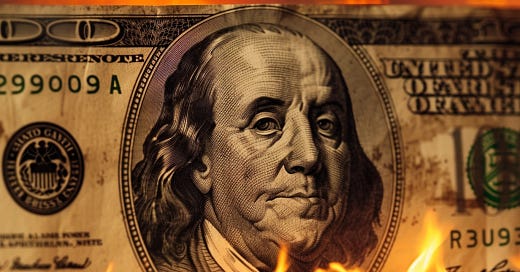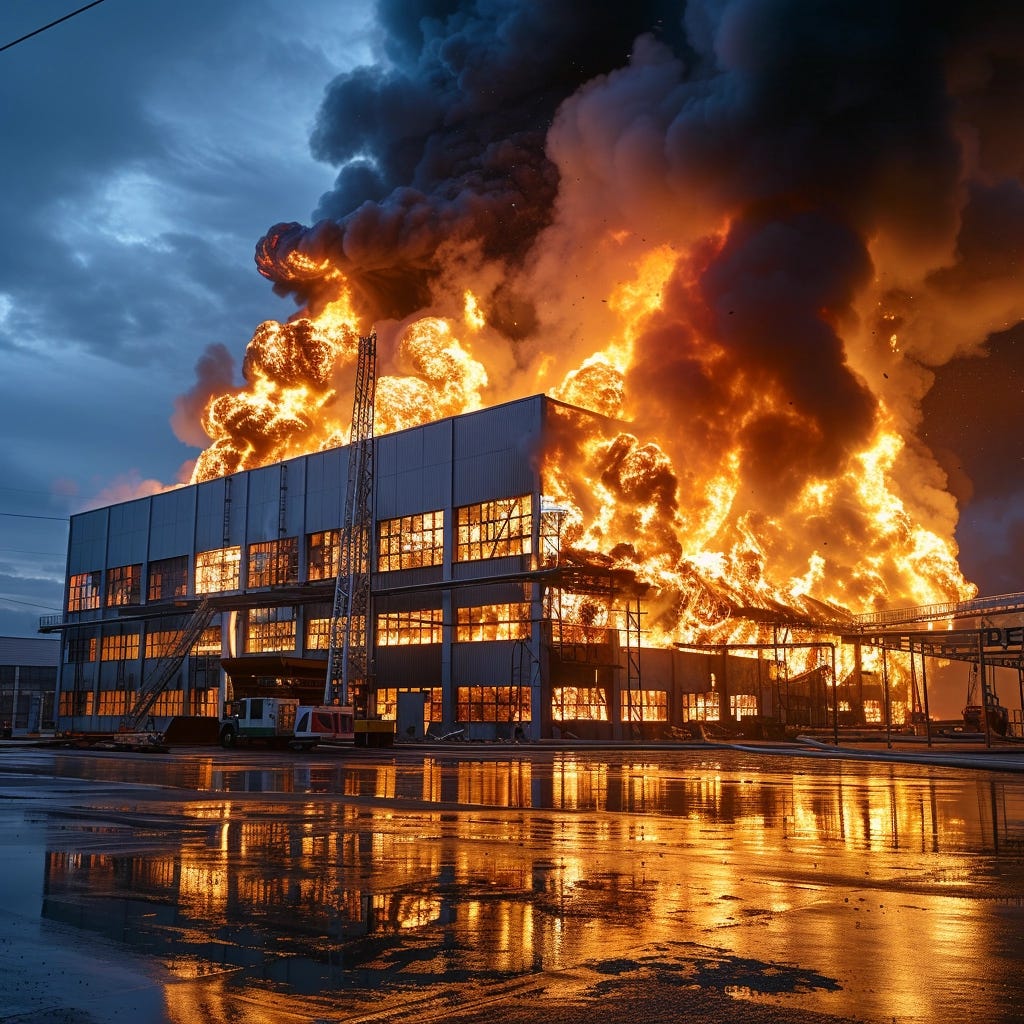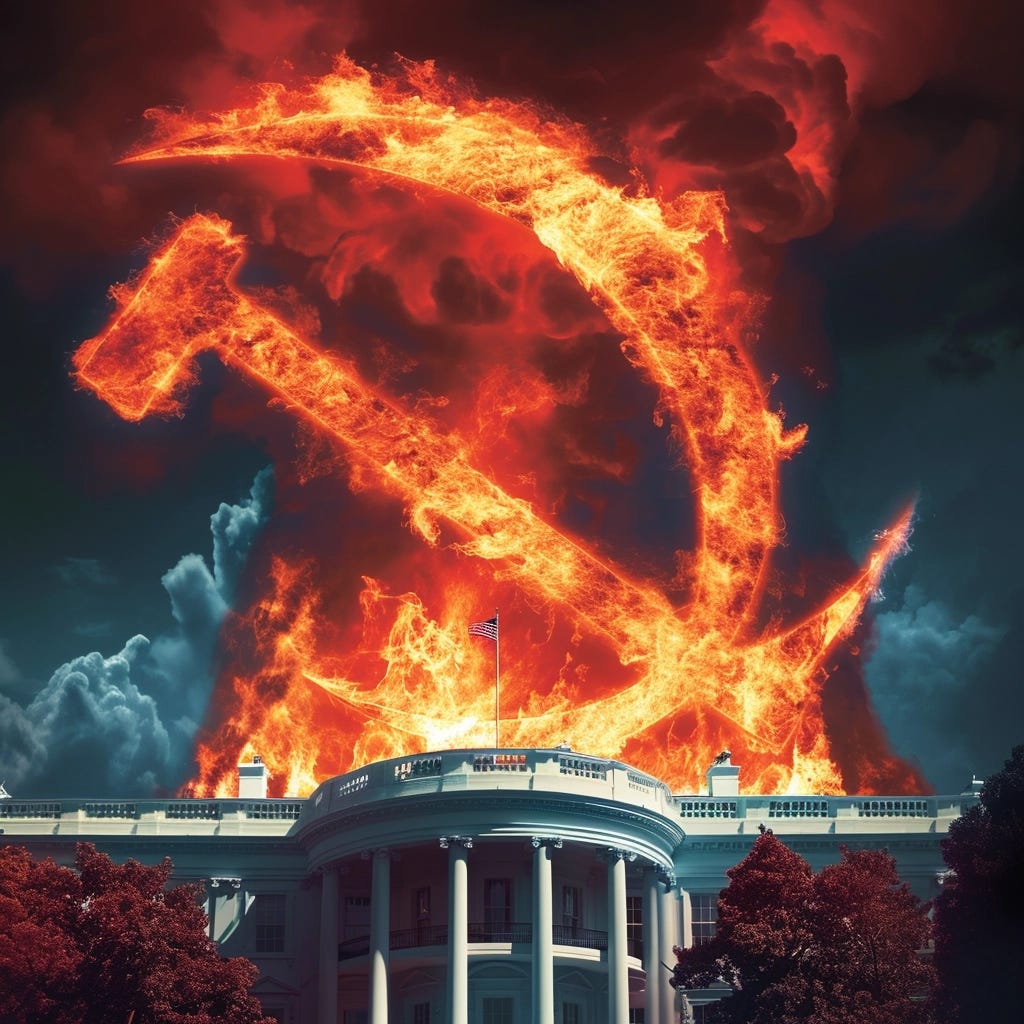In the ever-twisting saga of the American financial landscape, a fresh storm brews on the horizon, casting long shadows over the regional banking sector and its bedfellow, commercial real estate. The narrative isn't new, but the stakes, as they say, have never been higher. Bloomberg, that harbinger of financial forecasts and economic omens, recently issued a clarion call that should have anyone with a dime in the bank sitting up to take notice. The crux of their warning hinges on the precarious position of commercial real estate loans, a once-thriving sector now teetering on the brink of turmoil. The specter of defaults looms large, threatening to topple hundreds of U.S. banks like a row of dominoes carelessly lined up by an overambitious child. And who, you might ask, is left holding the bag? None other than the unsuspecting taxpayer, potentially on the hook for losses that boggle the mind and empty the wallet, soaring into the trillions.
To paint the picture in vivid hues, let's wander through the festering hellscape that commercial real estate has morphed into. Senior editor James Cromby, in his note, ushers us into this dystopian world with the finesse of a seasoned tour guide. He speaks of downtown Pittsburgh, where nearly half of the office space stands on the precipice of vacancy within a mere four years. Major cities like San Francisco have already embraced their new roles as zombie apocalypse towns, their abandoned buildings languishing under the relentless gaze of the sun. This decline isn't the result of a singular cataclysm but rather the culmination of a series of missteps and miscalculations, with the Federal Reserve's yo-yoing interest rates playing the villain in this piece. Initially, these rates, as low as the morale of a jilted lover, flooded the real estate market with a deluge of cheap money, spurring a construction boom that was as unsustainable as a chocolate teapot. The landscape was overbuilt, a concrete jungle teeming with optimism but lacking in foresight.
Then, in a twist reminiscent of a Greek tragedy, the Fed, seized by a panic akin to a deer in headlights, reversed course. The rates skyrocketed in response to the inflationary pressures of 2021, a move that plunged the valiant ship of commercial real estate into the stormy waters of financial duress. This upheaval in the market echoes the bank crises of yesteryears, where falling bond prices set off a chain reaction of panic and withdrawal among depositors. That crisis was only quelled when Janet Yellen and Jerome Powell, like knights in shining armor, rode in with their bailout packages, offering sweetheart loans based on asset values that seemed conjured from the thin air of optimism, alongside guarantees that stretched the fabric of credulity, courtesy of the comically underfunded FDIC.
Speaking of the FDIC, let's take a moment to marvel at the audacity of an institution guaranteeing over $20 trillion in deposits with a war chest that wouldn't cover a modest yacht. With a coverage ratio that makes David facing Goliath seem like a fair fight, one can't help but chuckle at the sheer absurdity of the situation. This financial high-wire act brings to mind the precarious balancing acts of circus performers, where the safety net is more a suggestion than a reliable contingency.
As we peel back the layers of this economic onion, tears well up, not just from the pungent aroma of impending doom but also from the realization that nothing of substance was fixed in the aftermath of the previous crises. The underlying issues were merely swept under the rug, left to fester and multiply like gremlins after a midnight snack. Now, as Cromby points out, the ticking time bomb of commercial real estate debt looms large, with nearly $930 billion coming due in the not-so-distant future. This mountain of debt, swollen by 28% from the previous year, casts a long shadow over the banking sector, particularly the small to medium-sized institutions that have traditionally been the lifeblood of local economies.
These regional banks, many of which have invested a significant portion of their portfolios in commercial real estate, find themselves in a particularly precarious position. They are the Davids in a world of financial Goliaths, armed with slingshots facing down a behemoth that grows more menacing with each passing day. Their intimate knowledge of the local markets, once a boon, has become their Achilles' heel, as they grapple with the fallout from the Fed's largesse to developers. The irony is as rich as a triple chocolate cake, with the very institutions designed to nurture local economies now at risk of being undone by macroeconomic forces far beyond their control.
As the clock ticks down on this financial time bomb, the echoes of past crises serve as a haunting melody, a reminder of the fragility inherent in our banking system. The National Bureau of Economic Research throws another curveball into this already tumultuous mix, estimating that as many as 385 American banks could find themselves ensnared in the throes of failure, primarily due to their heavy investment in commercial real estate. The majority of these would be the smaller, regional banks, who, in their pursuit of local prosperity, have inadvertently tied their fates to the mercurial whims of the real estate market. It's a classic tale of local knowledge and dedication getting blindsided by the unforeseen consequences of federal monetary policy—a policy that seems to have been guided more by the principles of a casino than by those of prudent financial stewardship.
The implications of this potential cascade of bank failures are profound, not just for the banks themselves but for the broader economy and, by extension, every taxpayer. The last time a banking crisis of this magnitude unfolded, with the Savings and Loan debacle, the taxpayer was left to foot a bill that amounted to 80% of the losses. This time around, with the stakes even higher and the numbers even more staggering, the prospect of a taxpayer-funded bailout looms large, casting a shadow over the financial landscape that could take years, if not decades, to dispel.
What's particularly galling in this scenario is the disparity between the potential fate of these regional banks and that of their larger counterparts. The mega banks, with their vast reserves and diversified portfolios, may well emerge from this crisis not just unscathed but potentially even stronger, feasting on the remnants of their smaller rivals like vultures circling a carcass. It's a sobering reminder of the Darwinian nature of our financial ecosystem, where survival often hinges not on fairness or foresight but on sheer size and the ability to weather economic storms.
In this high-stakes drama, the Federal Reserve finds itself in a particularly unenviable position. The levers it can pull to mitigate this looming crisis are limited and fraught with their own set of complications. Lowering interest rates could provide a temporary reprieve for the beleaguered real estate sector, but with inflation continuing its relentless march upward, such a move could exacerbate other facets of the economic crisis, leading to a scenario where the cure is as damaging as the disease.
As we stand on the precipice of what could be another defining moment in the history of the American financial system, one can't help but feel a sense of déjà vu. The patterns repeat, the players rotate, but the underlying script remains eerily consistent. It's a tale of ambition and overreach, of policies crafted with the best of intentions but plagued by unforeseen consequences. And at the heart of it all are the regional banks, those stalwarts of local economies, now caught in the crosshairs of a crisis that threatens to redefine the very landscape of American banking.
As we ponder the potential outcomes of this unfolding saga, it's essential to approach the situation with a blend of vigilance and perspective. While the challenges are significant, they are not insurmountable. The resilience of the American financial system has been tested time and again, and while the path ahead may be fraught with obstacles, it is through navigating these challenges that we find opportunities for growth and renewal. So, as we brace for the impact of the coming storm, let us do so with an eye toward the future, armed with the lessons of the past and the unwavering belief in our collective ability to overcome.








